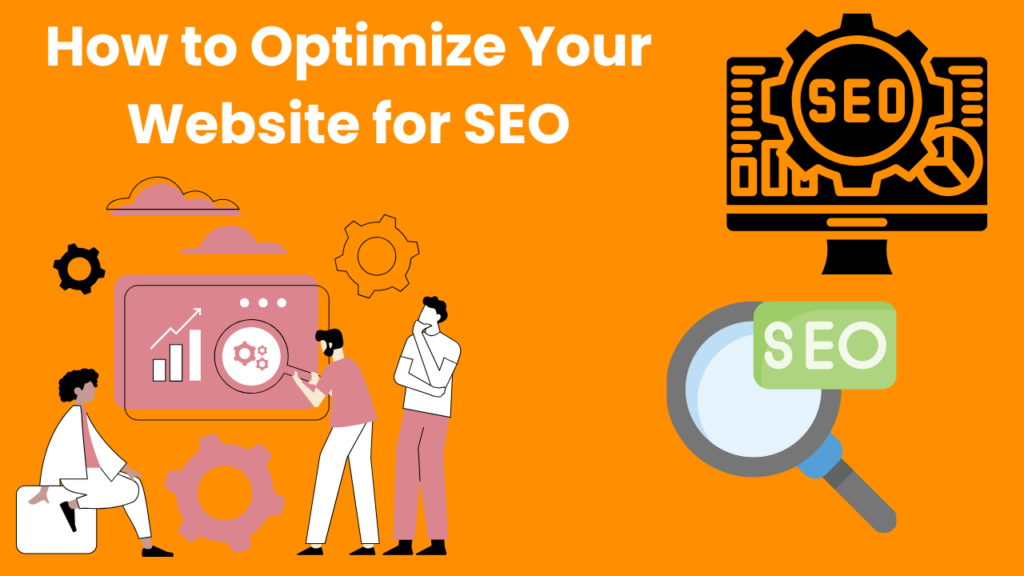How to Optimize Your Website for SEO in 2025: Unlocking Your Success Potential!

SEO Title: “How to Maximize Your Mobile Phone’s Features – Unlock Your Device’s Full Potential”
SEO Meta Description: “Learn how to maximize your mobile phone’s features with these actionable tips. Unlock your smartphone’s full potential to improve productivity, security, and entertainment.”
URL: /how-to-maximize-your-mobile-phones-features/
Search Engine Optimization (SEO) is vital to the success of any website. Whether running a blog, an e-commerce store, or an informational site, optimizing your website for SEO can significantly improve your online visibility, attract more visitors, and boost conversions. This comprehensive guide will walk you through optimizing your website for SEO, offering practical tips and actionable strategies to help you rank higher on search engine results pages (SERPs).
What Is SEO and Why Is It Important?
SEO is the practice of optimizing your website to make it more visible to search engines like Google, Bing, and Yahoo. The better your SEO, the higher your site will rank in search results, making it easier for users to find you.
SEO (Search Engine Optimization) is the practice of optimizing websites and content to improve their visibility on search engines like Google. It involves various strategies and techniques aimed at increasing organic (non-paid) traffic to a website.
Importance of SEO
- Increased Visibility: Higher rankings on search engine results pages (SERPs) result in greater visibility, attracting more visitors to your site.
- Credibility and Trust: Websites that rank at the top of search results are often viewed as more credible and trustworthy by users.
- Better User Experience: SEO focuses on optimizing website structure and content, improving the overall user experience.
- Cost-Effectiveness: Compared to paid advertising, SEO can yield a higher return on investment (ROI) over time.
- Targeted Traffic: SEO attracts users who are actively searching for the products or services you provide, leading to higher conversion rates.
- Competitive Advantage: Effective SEO strategies can offer you an advantage over competitors who are not enhancing their online presence.
Benefits of SEO:
- Increased Traffic: Higher rankings lead to more clicks and organic traffic.
- Cost-Effective Marketing: Unlike paid ads, organic traffic is free.
- Improved User Experience: SEO encourages better content and site organization.
- Brand Credibility: Ranking high on SERPs builds trust with users.

How to Optimize Your Website for SEO
The key to optimizing your website for SEO lies in addressing both on-page and off-page factors. Let’s break it down step by step:
1. Conduct Keyword Research
Keyword research is the foundation of SEO. Identify the terms and phrases your target audience is searching for and develop research that serves as the basis of your SEO strategy. Create content that aligns with their intent. Recognizing the terms and phrases your target audience uses in their searches is crucial. This keyword research should guide your SEO approach. Craft content that matches the intent behind these search phrases to effectively engage your audience. Remember, aligning your content with their intent is essential for successful SEO.
Steps to Conduct Keyword Research:
- Use tools like Google Keyword Planner, Arefs, or SEMrush.
- Focus on long-tail keywords (e.g., “how to optimize your website for SEO”) for better targeting.
- Analyze your competitors’ keywords. Examine investigate and evaluate the keywords that your competitors are utilizing. Understanding their strategies can give you a significant advantage in enhancing your search visibility and driving more traffic to your business’ keywords used by your competitors.
2. Optimize Your Website’s Content
Content is king in SEO. High-quality, relevant, and engaging content keeps users on your site and signals search engines that your site provides value.
Content Optimization Tips:
- Use your focus keyword in the title, headings, and throughout the article naturally.
- Write a compelling meta description (155-160 characters) including the focus keyword.
- Structure your content with subheadings (H2, H3, etc.) for better readability.
- Include internal and external links to add value.
- Create content that answers users’ questions and solves their problems.
3. Improve Website Speed
Page speed is a critical ranking factor in Google’s algorithm. A slow website can frustrate users and increase bounce rates, negatively affecting SEO.
How to Improve Website Speed:
- Compress images using tools like Tiny PNG.
- Use a Content Delivery Network (CDN) like Cloudflare.
- Minimize HTTP requests by combining CSS and JavaScript files.
- Enable browser caching.
4. Make Your Website Mobile-Friendly
With most searches happening on mobile devices, having a mobile-friendly website is essential.
How to Optimize for Mobile:
- Use responsive design so your site adjusts to any screen size.
- Test your website’s mobile usability using Google’s Mobile-Friendly Test Tool.
- Avoid large pop-ups that hinder user experience on smaller screens.
5. Optimize Images for SEO
Images enhance the user experience, but they also play a role in SEO. Properly optimized images can improve your site’s loading speed and help search engines understand your content.
Image Optimization Tips:
- Use descriptive file names (e.g., “how-to-optimize-website-for-SEO.jpg”).
- Add alt text with relevant keywords for accessibility and SEO.
- Compress images without reducing quality.
6. Build High-Quality Backlinks
Backlinks (links from other websites to yours) are a significant ranking factor. They signal to search engines that your content is valuable and trustworthy.
How to Build Backlinks:
- Create shareable, high-quality content.
- Reach out to blogs and websites for guest posting opportunities.
- Use tools like Arefs to find backlink opportunities.
- Build relationships with influencers and industry experts.
7. Use Internal Linking Strategically
Internal links connect your website’s pages, helping users navigate your site easily and aiding search engines in understanding your site’s structure.
Tips for Internal Linking:
- Link to relevant content using descriptive anchor text.
- Avoid overloading pages with too many internal links.
- Focus on linking to high-priority pages.
- Concentrate on creating links to important pages.
8. Fix Broken Links
Broken links create a poor user experience and can harm your SEO. Use tools like Broken Link Checker to identify and fix broken links on your website links negatively impact user experience and can harm SEO. Utilize tools like Broken Link Checker to locate and repair broken links on your website.

9. Optimize Your Website for Voice Search
With the rise of voice assistants like Siri and Alexa, voice search optimization is more important than ever.
How to Optimize for Voice Search:
- Focus on conversational, long-tail keywords.
- Provide direct answers to common questions.
- Include FAQs (Frequently Asked Questions) on your site.
10. Monitor Your Website’s Performance
Regularly monitoring your website’s SEO performance helps you identify areas for improvement. Consistently tracking your website’s SEO performance enables you to pinpoint areas that need enhancement. Keeping an eye on your website’s SEO performance regularly allows you to recognize aspects that require improvement. By consistently tracking this performance, you can identify specific areas needing enhancement.
Key Tools to Use:
- Google Analytics: Track traffic and user behavior.
- Google Search Console: Monitor search performance and fix indexing issues.
- SEMrush/Arefs: Analyze your SEO efforts and track keyword rankings.
Common SEO Mistakes
Even when optimizing your website for SEO, there are common mistakes that can hinder your efforts:
- Keyword Stuffing: Overusing keywords can lead to penalties.
- Ignoring Meta Descriptions: A poorly written or missing meta description can hurt click-through rates.
- Neglecting Mobile Users: Not having a mobile-friendly site can result in lost traffic.
- Poor-Quality Content: Content that lacks depth or value will not rank well.
Conclusion
Learning how to optimize your website for SEO is an ongoing process that requires time, effort, and consistency. By implementing the strategies outlined in this guide—keyword research, content optimization, improving site speed, and building backlinks—you can create a website that ranks high on search engines and attracts more visitors.
Remember, SEO is not a one-time effort. Monitor your performance, make necessary adjustments, and stay updated with search engine algorithm changes to maintain your rankings. Start optimizing today and watch your website climb the search engine results pages! SEO is an ongoing process. Regularly monitor your performance, adjust as needed, and keep up with search engine algorithm updates to sustain your rankings. Begin optimizing today and see your website rise in search engine results pages!
If you are interested in becoming a web developer, you read this article https://www.xafsashariif.com/how-to-become-a-web-developer/
Welcome to my page I hope you read helpful articleshttps://www.xafsashariif.com







